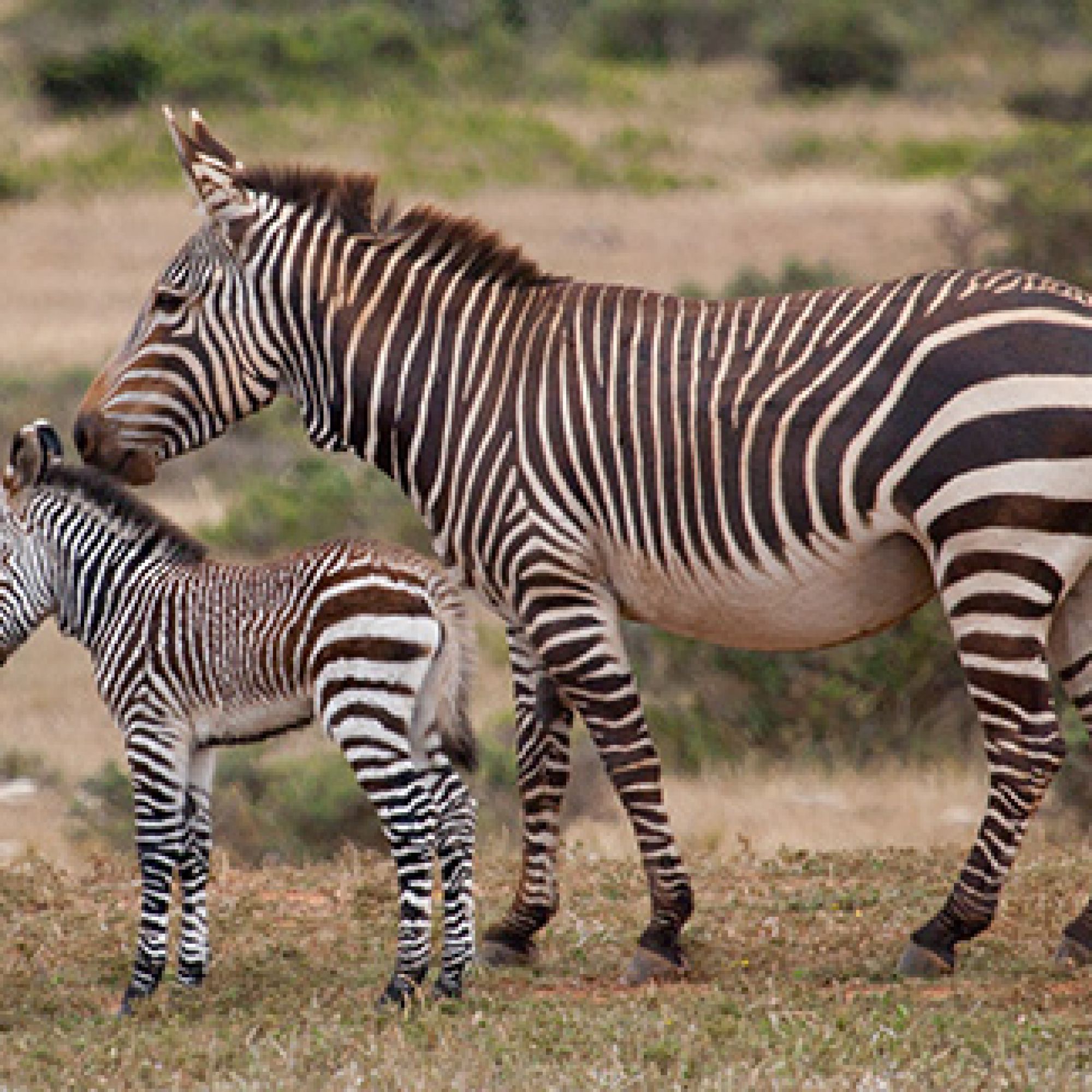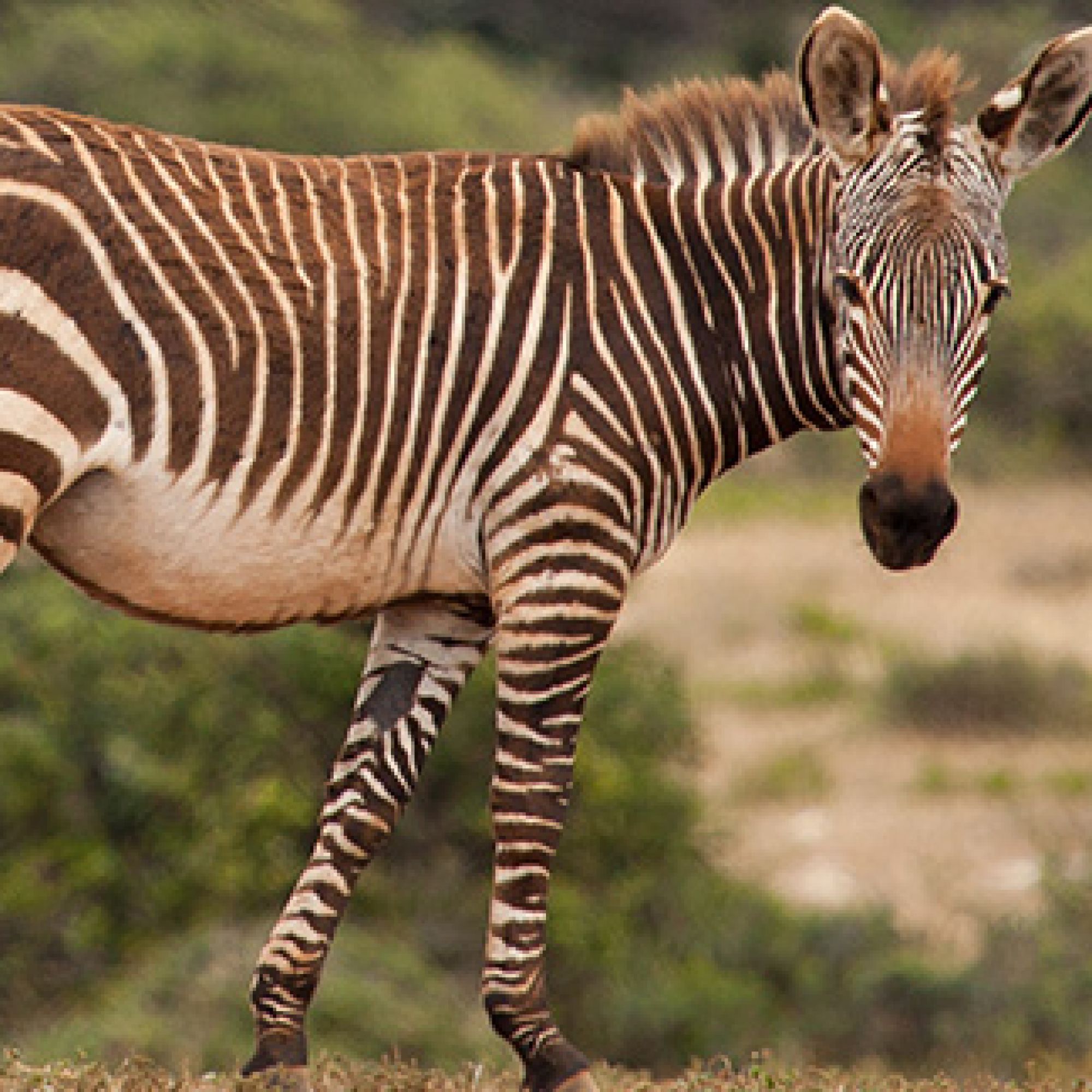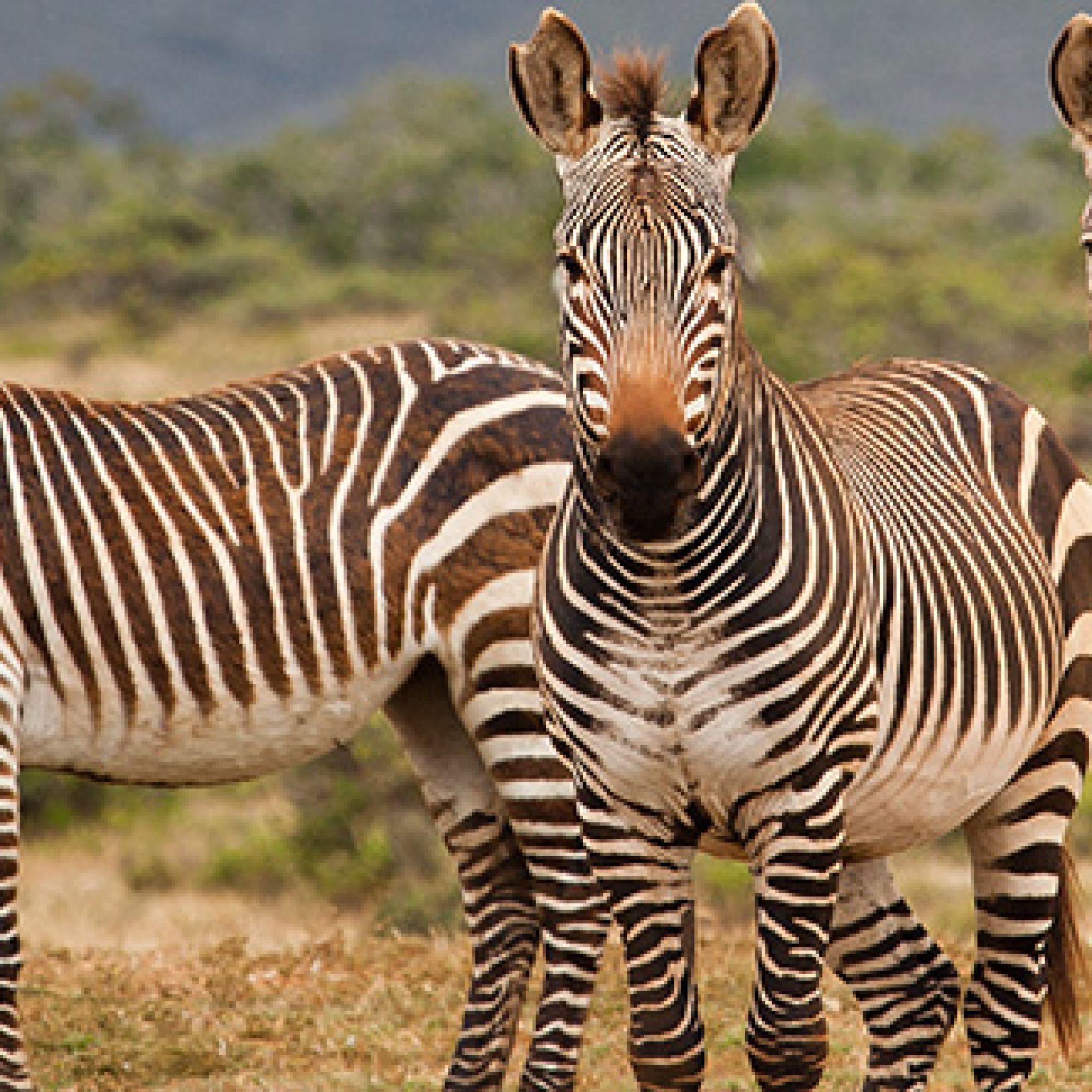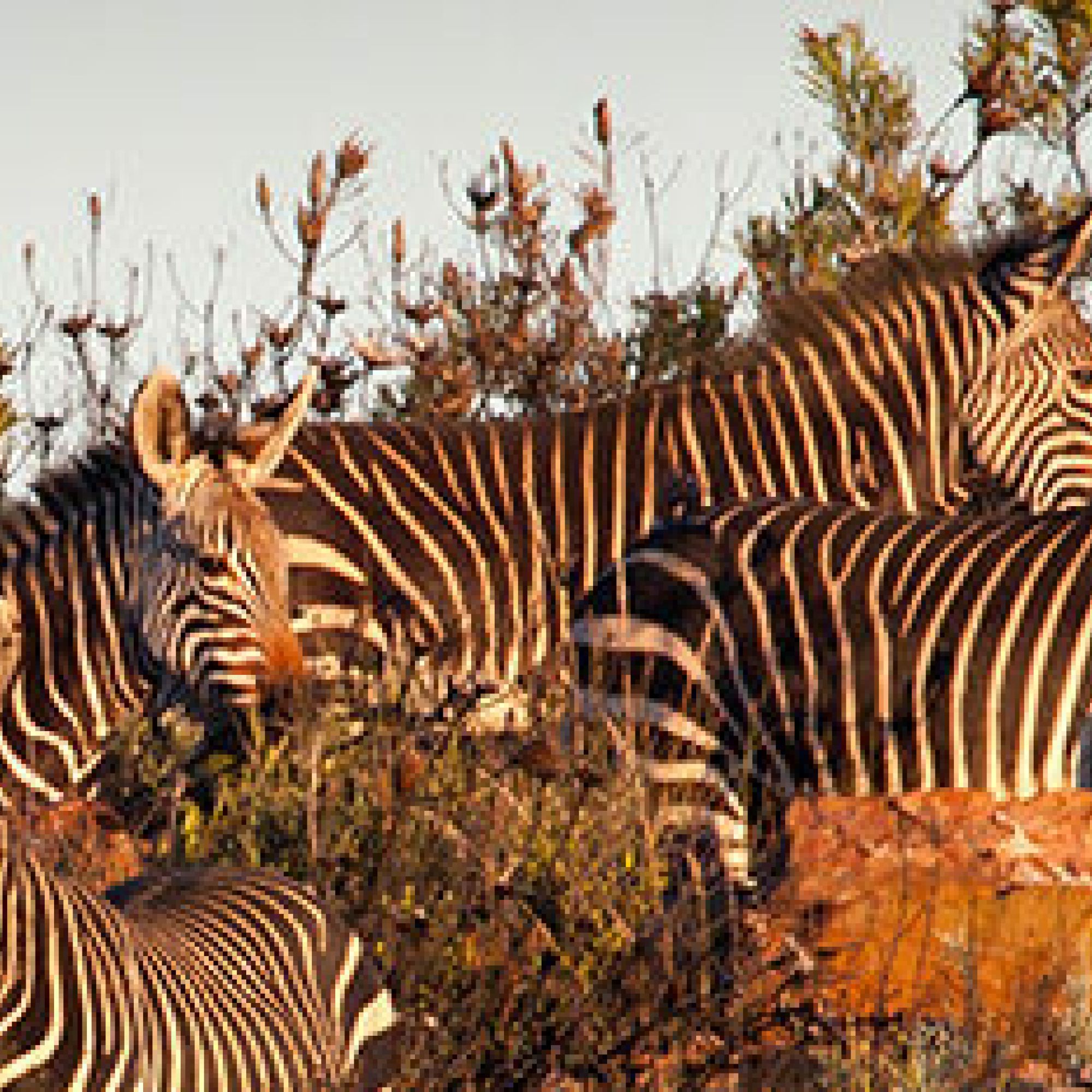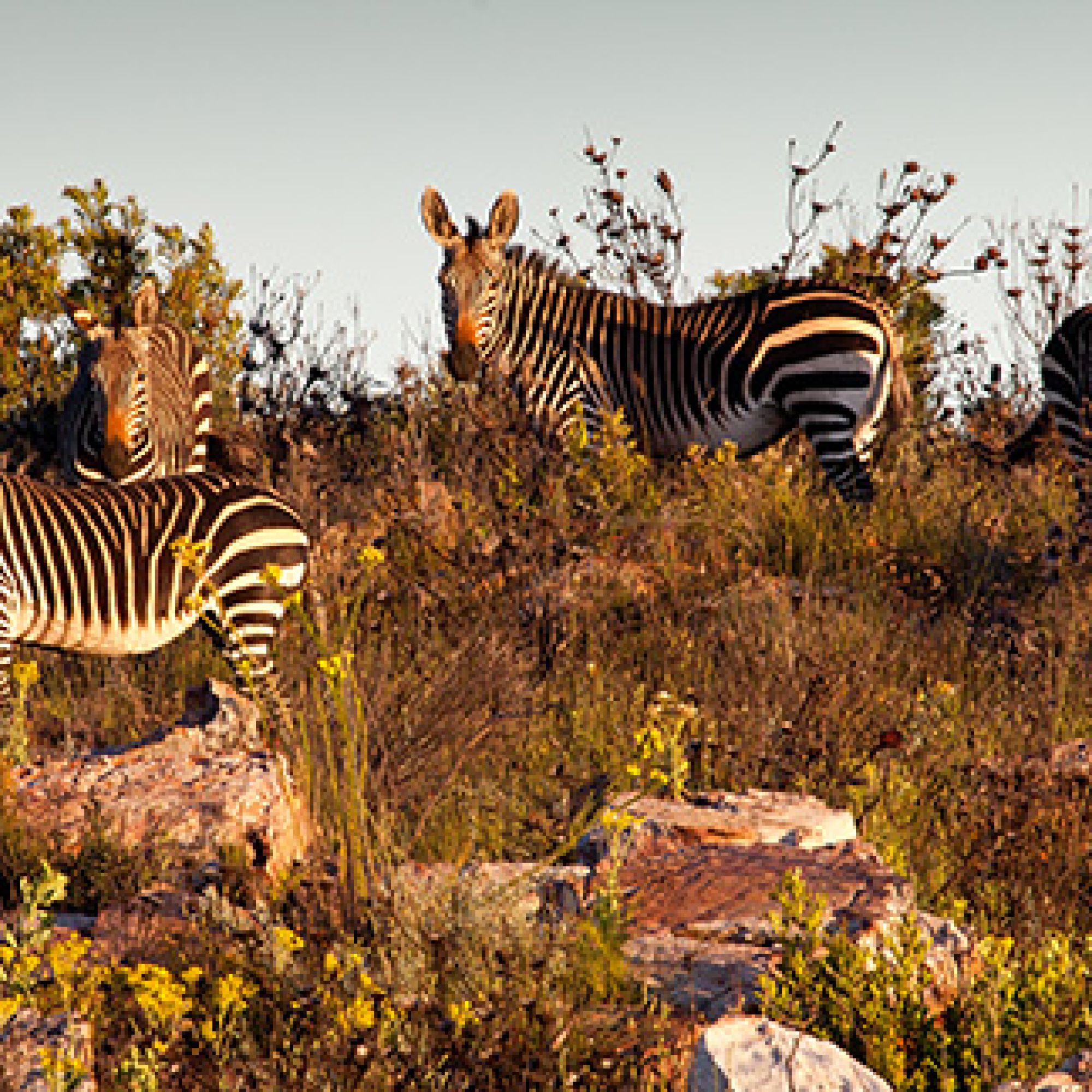Cape mountain zebra project
CAPE MOUNTAIN ZEBRA: Equus zebra zebra
Cape mountain zebras once roamed over most of the Cape’s mountainous areas where enough water, shelter and grazing were found. Illegal hunting and competition for natural grazing with livestock such as cattle, sheep, goats and donkeys, saw their numbers plummet until conservation measures managed to reverse the trend.
Success Story
DATE | 1922 | 1950s | 1984 | 2000 | 2014 |
NUMBERS | 400 | 100 | 400 | 1200 | 2790 |
The endangered Cape mountain zebra was reduced to about 400 animals at the turn of the century, falling to about 90 animals in the 1950s. However, the conservation efforts by provincial reserves, national parks and landowners have paid off. The Mountain Zebra National Park at Cradock, proclaimed in 1937, was the first reserve to offer them protection. Various conservation programmes, such as re-establishing them at De Hoop Nature Reserve in the 1960s, were established. The population has grown from under 100 in the 1950s to 1 200 animals by 2000.
Legal requirements
The Mountain Zebra Working Group was initiated by CapeNature and South African National Parks, and was responsible for determining priorities for its conservation. Strict criteria for allocating priorities for conservation areas have been agreed, one of them being that the site must be within the historical distribution range of the subspecies. Another criterion is that the minimum number introduced should be 14 either in a 1:1 ratio, or slightly skewed in favour of females. Furthermore, the available habitat should be sufficient to support at least 100 animals.
Major threats to these animals include the possibility of hybridisation with Hartmann’s mountain zebra which should be averted at all costs, as well as the loss of genetic diversity within and between the various populations. No zebras of any sort may be translocated without formal approval by permit from CapeNature and approval from the provincial veterinary authority.
In November 2017, the Cape mountain zebra Biodiversity Management Plan was gazetted.
This Biodiversity Management plan (BMP) constitutes an important milestone in the conservation of Cape mountain zebra. It traces the long history of conservation measures and research aimed at ensuring the future of the subspecies, from the early efforts of the first half of the twentieth century to the most recent update on its conservation status.
This well documented history, together with an extensive consultation process, enabled the BMP to accurately identify the threats currently facing Cape mountain zebra, as well as to formulate a set of objectives designed to counter the threats. Finally the BMP outlines the next important steps, which constitute the governance arrangements for the implementation of the plan, and then its submission to the Department of Environmental Affairs for gazetting for public participation.
- Extract from the Foreword to the Biodiversity Management Plan for the Cape mountain zebra by Dr Peter Novellie
The Biodiversity Management Plan for the Cape Mountain Zebra can be downloaded here.
Social life
Cape mountain zebras tend to form small stable breeding or bachelor herds of between five and eight individuals.
Breeding herds usually consist of an adult stallion with up to four mares and their foals. Foals are born throughout the year, although more births occur during the summer. The gestation period is effectively 12 months.
Stallions use a high-pitched alarm call to alert the herd of a possible threat. Pulled-back ears, lowered head, an outstretched neck and bared teeth, a lashing tail and a rush towards the antagonist, are all part of the threat behaviour of both stallions and mares.
ID Documents
No two zebras have the same stripe pattern. In fact each side of the body has a unique pattern. Just as is the case with fingerprints, this helps to identify individual animals.
The stripes are a form of camouflage which breaks up the shapes making them almost invisible against their mountainous habitat background when standing still.
Eating habits
These grazers prefer taller grasses, but readily feed off recently burned veld. They are predominantly unselective grazers, capable of utilising grass of a lower nutrient value. They therefore need to eat more and are referred to as bulk grazers.
Map of distribution
Naturally surviving populations of Cape mountain zebra were eventually restricted to the Mountain Zebra National Park (MZNP) and the Gamkaberg and Kammanassie provincial nature reserves. Animals from the MZNP population have since been reintroduced to other protected areas, both formal and private within the natural historic range.
Lookalikes
There are a number of obvious differences between the Cape mountain zebra and the taller Burchell’s zebra. Cape mountain zebras do not have the “shadow” stripers, as do the more common Burchell’s (or plains) zebra. They also have larger, rounder ears. Click here for useful information on how to prevent hybridization.
Cape mountain zebra (Equus zebra zebra)
- Looks more striped, because stripes are narrower
- Legs are fully striped
- Grid-iron pattern on rump
- No shadow stripes
- Dewlap on throat
- Belly generally white
- Mostly vertical stripes
Burchell's (Equus quagga burchelli)
- Looks less striped, because stripes are broader
- Legs not always fully striped
- Belly mostly striped
- Stripes are angled, creating a Y-shaped saddle
- Southern races have shadow stripes
- Shoulder height: 134cm
Click here to download a comprehensive best practice guide to the Kammanassie Cape mountain zebra.
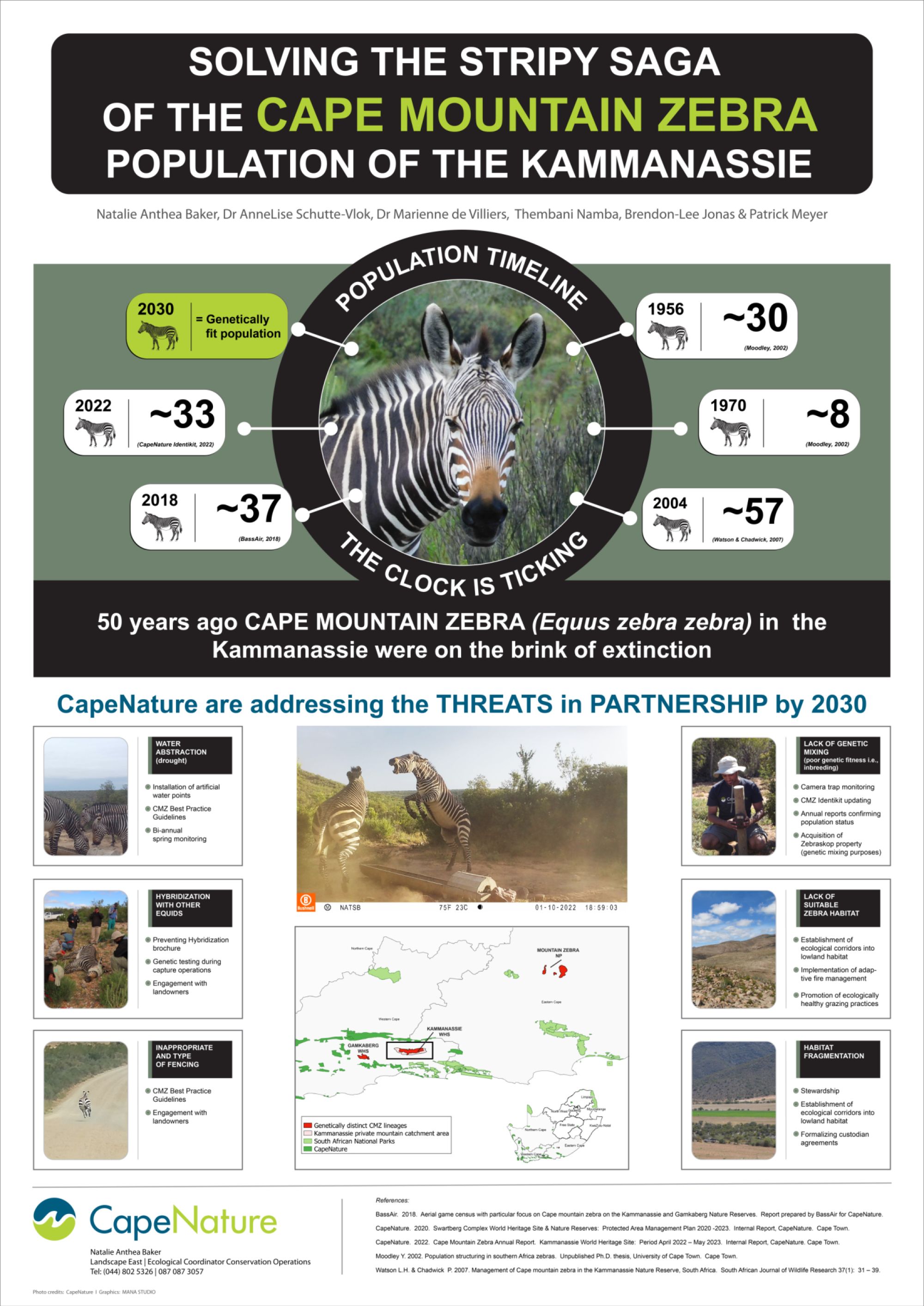
One of the poster presentations at the 2023 Fynbos Forum featured work being done on the conservation of the Cape Mountain Zebra
